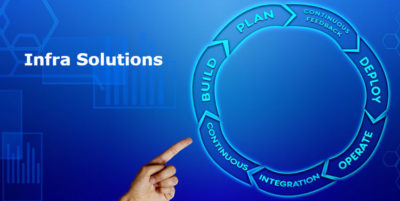With organizations becoming more advanced and distributed, the demand for any time, anywhere access to users and applications, too, has gone up. This has led to the rise of network transformation that requires uninterrupted connectivity while not compromising on security. To fulfil the goal of anywhere, any time access, businesses are called upon to provide security closer to the user and at the edge.
Two technologies – Software-defined wide-area networks (SD-WAN) and Secure Access Service Edge (SASE) – have been a boon for organizations. They are both used to smartly connect users, branches, and devices for any time, anywhere access. But with the evolution of networks, organizations need to determine whether SASE or SD-WAN is the right technology for them.
Let us first individually discuss the role of SD-WAN and SASE to understand the different factors that organizations must consider when choosing the optimal networking technology.
What is SD-WAN Network?
SD-WAN uses software to control the connectivity, management, and services between remote branches and data centers. It decouples the control plane from the data plane just as software-defined networking.
The deployment of such networks may include routers, switches, or virtualized customer premises equipment (vCPE), all of it running some version of the software that handles security, networking, policy, and other management tools, based on the vendor and customer configuration. One of its unique features is managing multiple connections from MPLS to broadband to LTE.
SD-WAN aims to streamline the way companies put new links to branch offices, manage how those links are utilized in a better way – for data, voice, or video – and potentially save money.
According to Gartner, “We believe that emerging SD-WAN solutions and vCPE platforms will best address enterprise requirements for the next five years, as they provide the best mix of performance, price, and flexibility compared to alternative hardware-centric approaches. Specifically, we predict that by 2023, more than 90% of WAN edge infrastructure refresh initiatives will be based on vCPE or SD-WAN appliances versus traditional routers (up from less than 40% today).”
What is SASE Network?
SASE is a new type of architecture designed with the cloud in mind. It uses a distributed architecture that addresses many of SD-WAN’s limitations. For instance, SD-WAN architecture does not securely connect mobile users.
SASE combines the capabilities of SD-WAN with cloud-native security functions. Unsurprisingly, SASE is a cloud-native approach to WAN infrastructure wherein all the endpoints are connected. SASE focuses on connecting individual endpoints – a branch office, an individual user, or a single device – and not the central network.
It aims to deliver the best user experience for cloud-hosted applications without compromising security. SD-WAN, on the other hand, falls short of this capability. An SD-WAN with advanced networking capabilities is required to enable SASE fully.
A SASE architecture can identify users and devices. It can also apply security controls based on current policies and deliver secure access to the appropriate applications or data. SASE promises to simplify WAN deployment integrated with security, all in a single platform and delivered -aaS from the cloud. A SASE model does away with the need for perimeter-based appliances and legacy solutions when designed appropriately.
A centralized, appliance-based control function does not determine traffic flows. Instead, users connect to the SASE cloud service to access and use web services, applications, and data with the consistent enforcement of an organization’s security policy.
Comparing SD-WAN and SASE
Similarities between SD-WAN and SASE do exist. Both use virtual overlay networks to route traffic through the most optimal and secure route automatically. They have wide coverage spanning geographies, making them ideal for global organizations. Lastly, both can be controlled from anywhere.
Despite the similarities, differences between the two technologies exist.
SASE focuses on built-in security with capabilities such as cloud access security brokers, secure web gateways, zero-trust network access, and firewalls. SD-WAN’s architecture focuses on an enterprises’ data center, built on its centralized control function. SASE uses not only private data centers but also the public cloud and colocation facilities. It creates edge service nodes where a SASE stack is located, typically in close proximity to public clouds, for secure low-latency access to cloud resources.
Even concerning security parameters, their approaches differ. When SD-WAN technology was designed, security was not taken into consideration. Secondary features and third-party vendors frequently deliver security within an SD-WAN architecture. Though historically, SD-WANs have not provided security, many SD-WAN solutions do have baked-in security. Instead of the security tools being located on the devices themselves, they are usually located at offices in customer-premises equipment. With SASE, security and networking decisions go hand-in-hand. SASE solutions offer security, and it becomes a security agent for not just the user’s device but also secures the cloud as a cloud-native software stack.
Choosing between SASE and SD-WAN
Now that there is an understanding of SASE and SD-WAN, we can easily choose when an organization should choose SASE over SD-WAN.
SD-WAN architectures are typically implemented when an organization needs some form of locally hosted and secured data and appliances.
The SASE solution is ideal for enterprises that do not want to build their secure networking and access. This means SASE is great for organizations looking for a single seamless solution with a focus on users and devices and one solution to embed all performance and security policies. This will reduce costs and complexity because it is a single-vendor network and security solution.
Ideally, an organization that does not want to build its security network and access control should consider implementing SASE. It’s a great solution for organizations that are looking for a single, unified security and networking solution. Therefore, reduced cost and less complexity are the way to define this single-vendor network.
Following are the explicit differences between SD-WAN and SASE:
1. Endpoints differ
SD-WAN is a type of network technology that optimizes traffic between locations on the existing corporate network. SD-WAN compliant appliances can route the traditional hub and speak network topology traffic, irrespective of whether the WAN is leased from a provider or owned by an organization. SASE is a type of network technology that can connect remote offices and other locations outside the corporate network. SASE does not connect branches to a central network; it is about uniting individual endpoints. An endpoint can be a branch office location, a remote workspace, a single device, or an individual user.
2. SASE is Cloud-centric
SD-WAN does accommodate cloud technology, but it is not a cloud-centric solution. SD-WAN was designed for traditional enterprise networks that still backhaul most traffic to the data center. A cloud gateway is needed for each site that requires its users to connect directly to the Internet for a particular workload type.
On the other hand, SASE is a cloud-native solution that’s ideal for organizations that use both public and private cloud resources. It uses points of presence (PoP) to connect to the Internet. The SASE vendor can provide these or from a public cloud provider.
3. Single/Multi-Vendor
SD-WAN optimizes traffic across hardware infrastructure well. But the problem arises when expanding its capabilities, which calls upon the need for third-party solutions. This leads to complexity and latency, thus reducing the return that SD-WAN is expected to deliver. SASE provides a single vendor solution that combines network routing and security policies. This minimizes costs and simplifies management as admins no longer need to swivel between multiple admin consoles.
4. Promise of security
Security is not natively present within SD-WAN. Security integration requires the addition of third-party security and networking appliances such as secure web gateways and application firewalls. On the other hand, security is part of the core functionality of SASE. In fact, according to Gartner’s original definition of SASE back in 2019, SASE combines SD-WAN network controls with the following security control:
“With WFH employees and remote contractors reliant on cloud services, it makes little sense tunnelling their network traffic to privately-operated SASE infrastructure only to route it back out to the Internet. Far better to direct employee traffic to a globally distributed SASE service often hosted in the same hyper-scale data centres used by the major SaaS applications.”
Takeaway
SASE is a product category that provides an integrated security suite that can easily be deployed and managed. This allows organizations to focus on their core business while avoiding the need for point products. Unfortunately, most organizations tend to adopt a more incremental approach when it comes to introducing new applications and services.
SD-WAN is a better option for organizations concerned with continuous change management. It can easily integrate various features such as Web Application Firewall (WAF) and Secure Web Gateway (SWG).
Instead of fighting over who can provide the best security solution, consider these two complementary offerings. Every organization will have a distinct definition of perfect. Know yours and then decide.
To know more about SD-WAN, SASE, and similar technologies, visit our whitepapers here.












